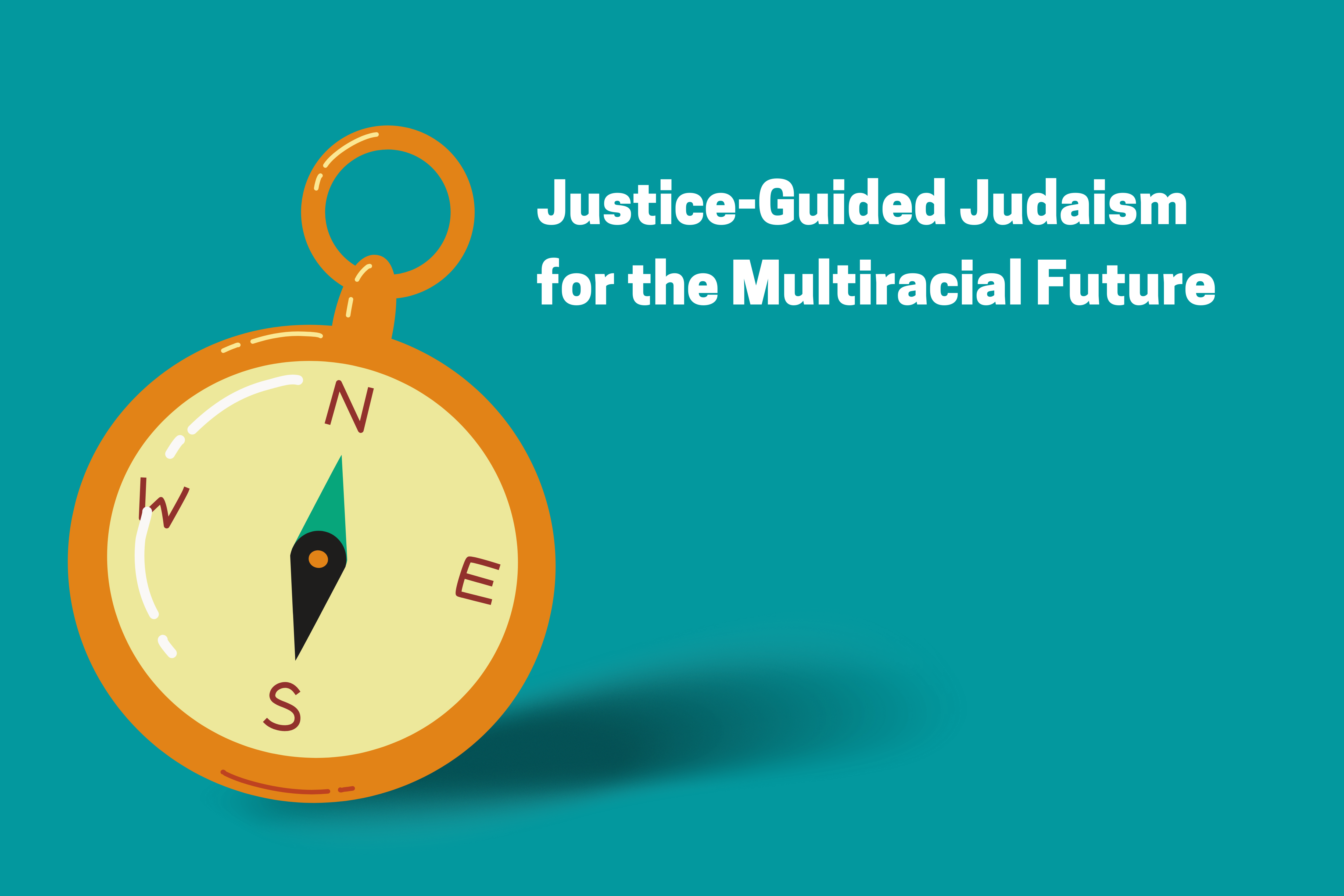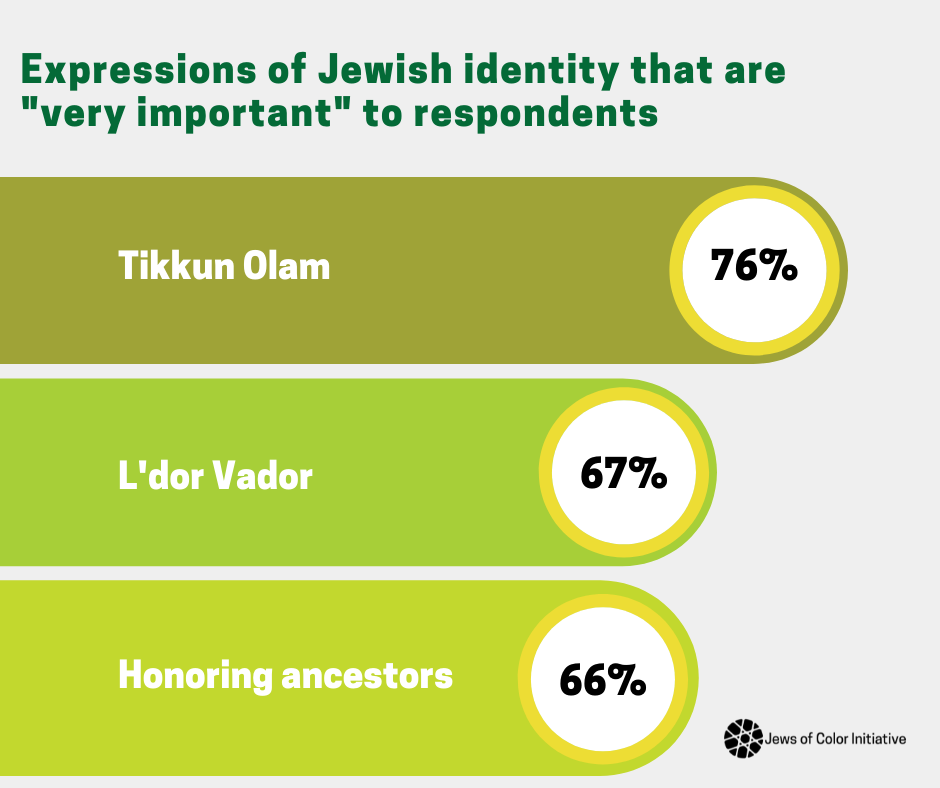
While many of the statistics in Beyond the Count are disheartening—representing the extent to which Jews of Color face discrimination, feel tokenized, or are excluded from belonging—another story emerges from Beyond the Count: one of the rich expressions of Jewishness among Jews of Color. In order to make space for the multiracial future that is dawning, the white Jewish community cannot only view Jews of Color through the racial harm they face, but also must begin to honor the vibrancy they infuse into contemporary American Judaism.
Participants of Beyond the Count were asked many questions about their identities and experiences as Jews of Color. One of the findings our research team uncovered was that expressions of Jewishness among JoC participants were most commonly tied to working for justice and equality—tikkun olam.
Tikkun olam is Hebrew for “repair the world,” and became a staple of American Judaism over the course of the 1960s and 70s. Tikkun olam was popularized largely because of institutional efforts to maintain engagement and relevancy among increasingly activist-minded young Jews (informed by the Civil Rights Movement and other social change efforts of the era) who were attending summer camps, Hebrew school, and youth groups. [1]
Today, our study Beyond the Count shows that the concept of tikkun olam is central to JoC expressions of Jewishness. Working for justice and equality (tikkun olam) was designated as “very important” to 76% of participants, followed by passing on Jewish identity to the next generation (l’dor vador) at 67%, and honoring parents, grandparents, and ancestors at 66% (Beyond the Count, p. 12).

In addition to seeing tikkun olam as central to their expressions of Jewishness, Jews of Color who participated in our study described having connections with a wide variety of social justice, environmental, spiritual, and educational Jewish organizations and communities (Beyond the Count, p. 12). In these two data points, we are able to see very clearly that Jews of Color are not treating tikkun olam as a passive value. Rather, they actively partake in it.
This offers a vital lesson: the pursuit of justice is never passive. While the concept of tikkun olam may feel inspiring or meaningful to many, how often does it translate to direct action and engagement in antiracist efforts? The participants of Beyond the Count are demonstrating just how interwoven our identities, values, and actions towards justice can and must be.
[1]. Krasner, Jonathan. “How Tikkun Olam Became Jewish Social Justice: The Origins and Evolution of a Jewish Value,” part III. A Faith That Does Justice, https://faith-justice.org/how-tikkun-olam-became-jewish-social-justice-the-origins-and-evolution-of-a-jewish-value-part-3/. Accessed 10 Feb. 2022.


